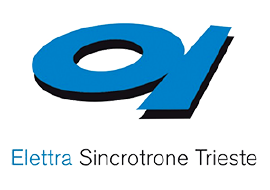STRUCTURAL PROPERTIES AND ENERGETICS
Equilibrium structural properties (such as Bravais lattice - in terms of lattice constants and angles - , bond lengths and bond angles) are obtained as output of density functional theory simulations for bulk, interfaces, surfaces, alloys, nanoscale systems, etc. Trends of total energy as a function of strain, pressure, chemical constituents, spin configuration, atomic coordination, etc can be evaluated to have hints on the system’s energetics. If relevant, distortions with respect to high-symmetry structures can be evaluated, in terms of atomic displacements, octahedral or tetrahedral rotations, tiltings, etc. Structure-property relationships (with emphasys on electronic and magnetic properties) can also be carefully investigated.




ELECTRONIC PROPERTIES
Density functional theory simulations can be performed to evaluate electronic properties, in terms of band structure (occupied and unoccupied states, energy band-gaps, spin resolved or not, resolved by atomic and orbital character, including or not relativistic effects, etc), total and partial (i.e. atomical- or orbital-resolved) density of states, Fermi surfaces, crystal-field splittings, charge- and spin-density plots, spin-textures, charge/orbital ordering patterns, etc. Other available features include band line-up occurring at interfaces and surface band structures.
MAGNETIC PROPERTIES
In case of magnetic materials, density functional theory calculations can be performed to evaluate atomic magnetic moments and ground-state magnetic configuration (i.e. ferromagnetic, antiferromagnetic, various non-collinear i.e. canted ferromagnetic, spin-spirals, etc). By mapping DFT total energies on model Hamiltonians including different terms (i.e. symmetric and antisymmetric exchange, Zeeman, biquadratic exchange, anisotropy, etc), one can estimate first-principles exchange coupling constants, anisotropy values, Dzyaloshinskii-Moriya vectors etc. Curie or Neel temperatures can also be addressed based on either mean-field approximation or Montecarlo approaches.


FERROELECTRIC PROPERTIES
In case ferroelectric materials are considered, density functional theory calculations can be performed to evaluate ferroelectric polarization along different crystallographic axes (within the Berry phase modern theory for polarization) and Born effective charge tensors. Piezoelectric effects can also be addressed. In case of coexistence between ferroelectricity and magnetism (i.e. in bulk or composite multiferroics), different magnetoelectric coupling phenomena can be examined, in terms of microscopic mechanisms and quantitative evaluation of coupling coefficients.




